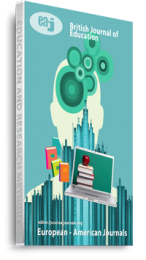Going by the language provisions of the National Policy on Education (NPE), every Nigerian child in school is bilingual. Bilingual in the sense that the NPE provides for mother tongue (MT) or Language of the immediate environment/community (LIE/LIC) medium of instruction at the first three years of primary education otherwise called the Early Basic and transition into the English medium from primary 4 (The Middle Basic). The implication is that at the early basic, both the MT or the LIE/LIC as a subject and the other content subjects would be taught in the prescribed medium of MT/LIE while English studies would be taught in English medium and conversely at the Middle Basic where English is the medium except for MT/LE as a subject. Some of the basic skills targeted at the primary education level are functional literacy and numeracy skills. Literacy, simply is defined as the ability to read and write in a given language. The purpose of this study is to ascertain whether the bilingual pupils in Abia and Nasarawa states of Nigeria are also achieved bi-literacy, (that is acquire literacy skill in both the Ìgbò/English and Hausa/English) respectively. It also sought to compare the learners’ level of literacy between Ìgbò and English and Hausa and English respectively, between male and female bilinguals and between Abia and Nasarawa bilinguals. Three research questions and three hypotheses guided the study. The population of the study was purposively the grade 5 Middle Basic while sample of 302 pupils (121 from Abia and 181 from Nasarawa states) were randomly selected from 5 primary schools proportionately selected in Aba North LGA of Abia State and Akwanga LGA of Nasarawa state respectively. Data was collected through researchers- constructed tests titled, Bi-literacy Reading and Writing Test (BRWT) comprising simple comprehension passages in English and its equivalents in Ìgbò and Hausa languages as well as translation exercises from English sentences into Ìgbò and Hausa respectively. The instrument had face and content validity. Data was analyzed using Mean and Standard Deviation for the research questions. Hypotheses1was tested with paired t-test while hypotheses 2 and 3 were tested using MANOVA. Findings include: both the bilingual Basic 5 pupils in Abia and Nasarawa states are bi-literate in their MT and English. There is a significant statistical difference in the biliteracy levels of bilingual Basic 5 pupils in Igbo/English and Hausa/English respectively. Hence, Abia bilinguals are more literate in English than in Igbo while the Nasarawa bilinguals are more literate in Hausa than in the English language. There is no significant statistical biliteracy difference between male and female Abia and Nasarawa bilingual Basic 5 pupils, the difference in their Mean scores is negligible. Finaly, there is a statistically significant biliteracy difference between the Abia Basic 5 bilinguals and their Nasarawa counterparts with the Abia bilinguals found more biliterate than the Nasarawa bilingual Basic 5 pupils. While Abia is recommended to get more intentional with MT/LIC medium at the basic levels of education, Nasarawa state is recommended to teach English in English and not in Hausa medium.
Keywords: bi-literacy and middle-basic education, bilingualism

